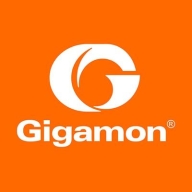

Splunk Observability Cloud and Gigamon Deep Observability Pipeline compete in the observability sector, with each boasting unique strengths. Splunk has a slight edge due to its comprehensive monitoring capabilities and broad data integration that provide extensive data insights.
Features: Splunk offers comprehensive monitoring capabilities, including custom dashboards, AI analytics, and detailed log search features, making it ideal for application performance monitoring and security insights. Gigamon features packet filtering and traffic aggregation, which are crucial for network visibility and performance improvement. Splunk's data integration helps users gain extensive insights, while Gigamon optimizes network performance through data deduplication and transformation.
Room for Improvement: Splunk users often cite the high costs, need for better integration, documentation, improved logging, scalability, and ease of use. There is also demand for enhanced AI features and simpler configurations. Gigamon users suggest improved performance, enhanced cloud monitoring capabilities, and a feature to display traffic flow within the platform to reduce dependency on additional tools.
Ease of Deployment and Customer Service: Splunk supports a wide range of deployment environments, including on-premises, hybrid, and public cloud, offering flexibility but presenting a complex UI challenge. User feedback on technical support is generally positive but notes room for improvement in response times and quality. Gigamon mainly supports on-premises deployment, with users finding its technical support knowledgeable and responsive, often relying on existing knowledge and documentation.
Pricing and ROI: Splunk is generally considered expensive, with high licensing costs and a data ingestion volume-based pricing model, yet users report significant ROI through enhanced efficiency and quicker incident resolution. Gigamon is also highly priced, but users find value in the network insight provided and operational efficiency improvement. While both solutions are costly, Splunk offers broader ROI through its monitoring capabilities, whereas Gigamon focuses on network performance and data management optimization.
Using Splunk has saved my organization about 30% of our budget compared to using multiple different monitoring products.
Anyone working in front-end management should recognize the market price to see the true value of end-user monitoring.
I have definitely seen a return on investment with Splunk Observability Cloud, particularly through how fast it has grown and how comfortable other teams are in relying on its outputs for monitoring and observability.
The technical support by Gigamon Deep Observability Pipeline is good because it has a local architect in my area.
On a scale of 1 to 10, the customer service and technical support deserve a 10.
They have consistently helped us resolve any issues we've encountered.
They often require multiple questions, with five or six emails to get a response.
We've used the solution across more than 250 people, including engineers.
As we are a growing company transitioning all our applications to the cloud, and with the increasing number of cloud-native applications, Splunk Observability Cloud will help us achieve digital resiliency and reduce our mean time to resolution.
I would rate its scalability a nine out of ten.
I would rate its stability a nine out of ten.
We rarely have problems accessing the dashboard or the page.
Unlike NetScout or regular agents for APM, RUM has many problems during the POC phase because customer environments vary widely.
The out-of-the-box customizable dashboards in Splunk Observability Cloud are very effective in showcasing IT performance to business leaders.
The next release of Splunk Observability Cloud should include a feature that makes it so that when looking at charts and dashboards, and also looking at one environment regardless of the product feature that you're in, APM, infrastructure, RUM, the environment that is chosen in the first location when you sign into Splunk Observability Cloud needs to stay persistent all the way through.
There is room for improvement in the alerting system, which is complicated and has less documentation available.
Splunk is a bit expensive since it charges based on the indexing rate of data.
It is expensive, especially when there are other vendors that offer something similar for much cheaper.
It appears to be expensive compared to competitors.
The Pipeline's Comprehensive Insights into data flows have helped improve operational efficiency and security.
Splunk provides advanced notifications of roadblocks in the application, which helps us to improve and avoid impacts during high-volume days.
For troubleshooting, we can detect problems in seconds, which is particularly helpful for digital teams.
It offers unified visibility for logs, metrics, and traces.
| Product | Market Share (%) |
|---|---|
| Splunk Observability Cloud | 2.0% |
| Gigamon Deep Observability Pipeline | 0.4% |
| Other | 97.6% |


| Company Size | Count |
|---|---|
| Small Business | 3 |
| Midsize Enterprise | 1 |
| Large Enterprise | 5 |
| Company Size | Count |
|---|---|
| Small Business | 20 |
| Midsize Enterprise | 10 |
| Large Enterprise | 43 |
Gigamon Deep Observability Pipeline is a comprehensive network visibility solution that provides real-time insights into network traffic. It offers SSL inspection and mobile network monitoring for traffic monitoring purposes. The solution optimizes networks, aids in security inspection, and improves firewall performance. It is praised for its performance, power, straightforward integration, stability, and ease of initial setup.
With Gigamon, organizations can gain complete visibility into their network traffic, identify potential threats, and take proactive measures to prevent them. The solution is ideal for organizations of all sizes, including enterprises, service providers, and government agencies.
Splunk Observability Cloud offers sophisticated log searching, data integration, and customizable dashboards. With rapid deployment and ease of use, this cloud service enhances monitoring capabilities across IT infrastructures for comprehensive end-to-end visibility.
Focused on enhancing performance management and security, Splunk Observability Cloud supports environments through its data visualization and analysis tools. Users appreciate its robust application performance monitoring and troubleshooting insights. However, improvements in integrations, interface customization, scalability, and automation are needed. Users find value in its capabilities for infrastructure and network monitoring, as well as log analytics, albeit cost considerations and better documentation are desired. Enhancements in real-time monitoring and network protection are also noted as areas for development.
What are the key features?In industries, Splunk Observability Cloud is implemented for security management by analyzing logs from detection systems, offering real-time alerts and troubleshooting for cloud-native applications. It is leveraged for machine data analysis, improving infrastructure visibility and supporting network and application performance management efforts.
We monitor all Application Performance Monitoring (APM) and Observability reviews to prevent fraudulent reviews and keep review quality high. We do not post reviews by company employees or direct competitors. We validate each review for authenticity via cross-reference with LinkedIn, and personal follow-up with the reviewer when necessary.